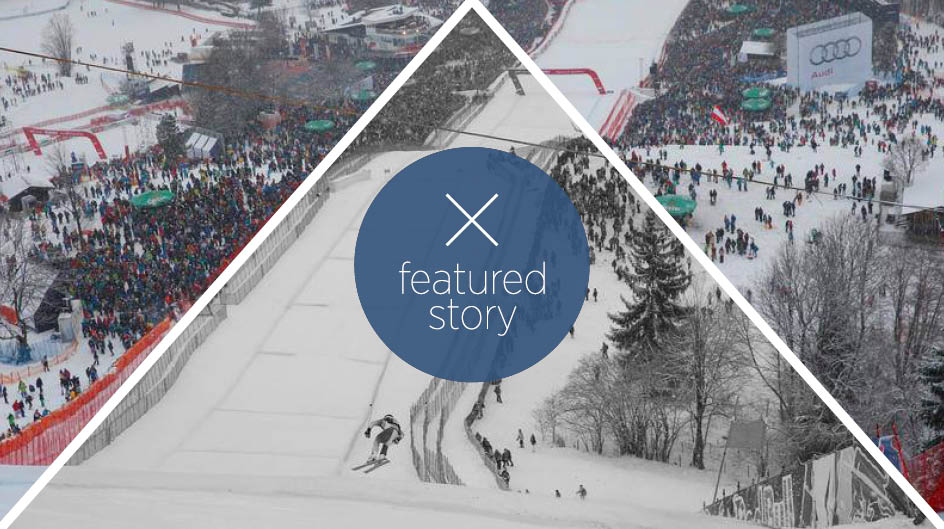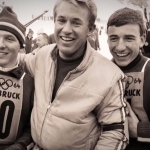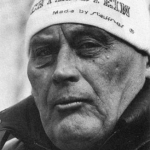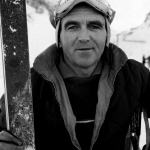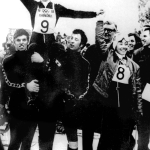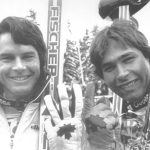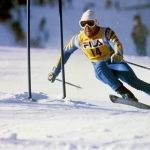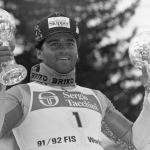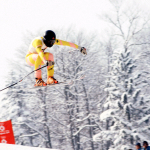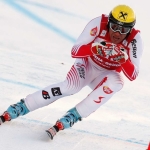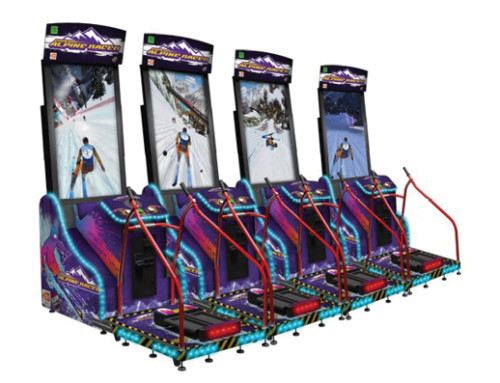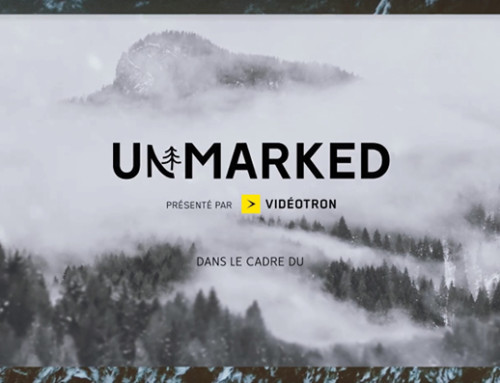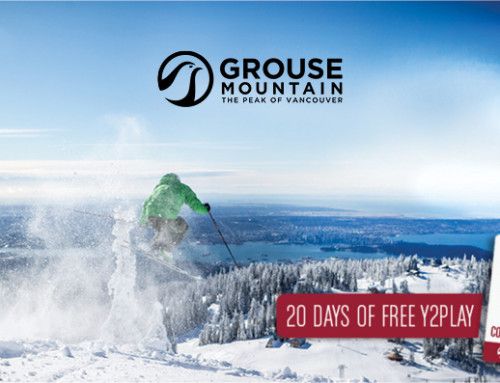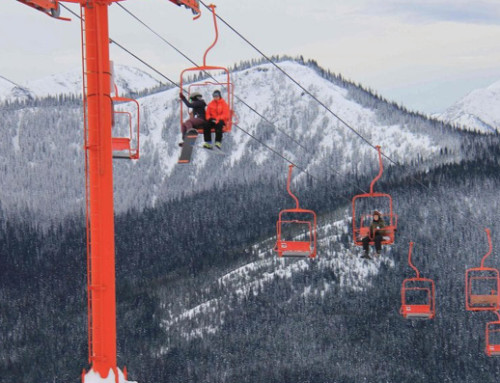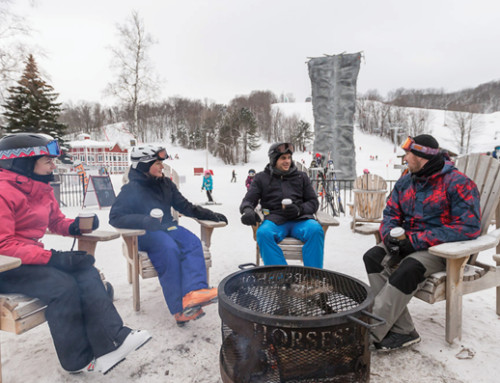BY: Mike Janyk PHOTOGRAPHY: ACA/Pentaphoto.
After 50 years, the World Cup needs to restore the balance between athletes and fans.
The alpine World Cup circuit is 50 years old this season, and the rising sentiment from within and around the world of ski racing is that it has fallen flat. It’s true that as athletes, we seem to love to complain almost as much as we love to ski: The coach is working us too hard, or not hard enough. It’s too cold. It’s too hot. My start number sucks. The lift is too slow. I have done a fair share of complaining myself over a 10-year career on the World Cup and, since retiring from competition, as a member of the FIS athletes’ commission.
But it’s clear there are real challenges here. Statistically, the TV figures have remained relatively level over the last few seasons, although it is noteworthy that more total broadcasting time is required to achieve the same overall media impact. At the same time, Rogers Sportsnet has dropped World Cup ski racing from its broadcasting line-up. Our current state can be considered solid on the surface, but shaky within.
On the plus side, all that complaining can be turned into motivation to succeed, and sometimes can actually bond a team, especially once all the BS is aired out. It can also spark some really great discussions with constructive ideas to bring positive change.
In his opening remarks during the latest International Ski Federation (FIS) conference, Niklas Carlsson, chair of the alpine World Cup committee, suggested that alpine skiing might be in “a midlife crisis.” This was reiterated in questions posed by FIS alpine committee chair Bernhard Russi: “Do we know who we are, where we are, and where we want (have) to go?”
To me, these remarks are refreshing, like coming up for air after being underwater far too long. These words represent a readiness for change and the possibility to discover a new way forward.
Before looking for a possible solution, let’s look at Russi’s questions and see if we can come to answers about who we are, where we are and where we want to go by looking back at where we started, where we’ve gone and who we were in the beginning.
All the way back in 1966, at the hotel/lodge/only thing in Portillo, Chile, two national alpine directors – Bob Beattie of the United States and Honoré Bonnet of France – met with French journalist Serge Lang to try figure out a way to bring major ski athletes together and, at the same time, fulfill a request from Jacques Goddet, then-director of the French sports paper L’Équipe, to educate the paper’s readers about the ski racing alpine circuit.
I’m picturing this remote building located beside a picturesque alpine lake, nestled at the bottom of a bowl created by the surrounding Andes Mountains.
Inside, the fireplace roars hot, but it is not necessary, as the three men are heated from the passion that fuels their words. Outside, snow falls onto the frozen lake, and a few hotel guests silently take in their winter surroundings. Back inside, our three allies sit in silence for a moment, then a few moments longer, as cigarette smoke gently drifts through the still air. All at once, their eyes rise and meet. Eureka! They jump up, and with a few handshakes, the World Cup is born. At least, this is how it goes in the opening scene of my mental screenplay.
- Horore Bonnet
- Serge Lange
- Bob Beattie (centre)
While I’m indulging in a little quasi-fiction, I’ll put myself in the room during this exchange. If they turned to me and asked, “Mike, who are we?”
I would reply, “We are of the athletes, for the fans.” That sounds kick-ass!
If these are the founding elements of our sport’s elite circuit, then we must seek balance between them to create alchemic gold: between athletes and fans.
We’ve come a long way over 50 years, through good times and bad, and I’m sure if you were to look back at the successful times compared to the stagnant, you would see a correlation with this balance. I wonder if the pro circuit was created because the World Cup athletes felt confined?
FIS currently runs eight different alpine events: slalom, GS, super-G, downhill, alpine combined, the team event, city parallel events, and new this year, a dual GS in Alta Badia, Italy. This is all done with the good intention of giving the viewer more of what we believe they want – but does the viewer need more? This schedule is taxing on the athletes, especially those who compete in all events to go for the coveted overall Crystal Globe, aka the Große Kugel. There are currently a combined 90 World Cup events shared between 38 resorts for the men and ladies – and that’s in years with no World Championship or Olympic events.
For fans, this seems like a bonus. There’s more content, more variety and a greater ability to showcase the sport. It should be a winning formula to attract viewership and a stronger fan base. But over these last few years, there’s been an opposite trend. There are concerns from some race organizers that it’s becoming harder and too expensive to put on World Cup events. Athletes are being restricted by rigid sponsorship and content regulations and inundated by constant equipment and competition rule changes.
The delicate balance has been lost, and I can see only one solution.
- Nancy Greene
- Ken Read and Steve Podborski
- Ingemar Stenmark
- Alberto Tomba
- Steve Podborski
- Hermann Maier
Give the sport back to the athletes. Free them up to push the limits of the sport. Make it exciting and enjoyable for the athletes first, and see if the fans respond. The new additions to the FIS and the Olympic umbrella are very much athlete-centred. Snowboard and ski halfpipe, slopestyle and ski cross still have a freshness to them, a freedom for creativity that allows them to build up from their athlete base, and it seems to be resonating with fans. It connects to the spectators’ own desire for freedom and to push the limits of life, which is far more powerful than any amount of extra content.
My solution: Refine the World Cup circuit. Create consistent programming of the best events and showcase them with a regular schedule throughout the year. Instead of seven events going towards the overall Crystal Globe, trim it to three: downhill, GS and slalom (sorry super-G), and host these events in a grand prix format Friday to Sunday. Classic venues may have to have combined winners between the downhill and slalom rather than run a separate event.
The athletes will feel more rested and more focused, and maybe more inclined to “throw down” for their runs, creating more excitement for fans. More fans plus a higher quality product delivered by FIS and the athletes equals greater value for the event organizers to sell to sponsors and broadcasters. More broadcaster and sponsorship interest opens up room for higher prize money for the athletes. Imagine 1.5 million euros on the line for the overall Kitzbuhel weekend winner. I’d watch that!
Whatever form the solution takes, the focus should be on restoring the balance between athletes and fans. This balance was behind the creation of the circuit. Maybe restoring it can allow the circuit to thrive for another 50 years.



